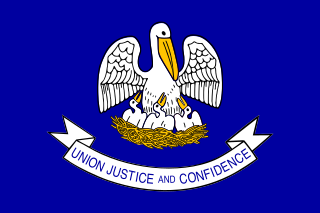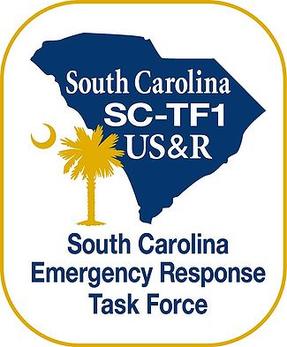
Federal Emergency Management Agency (FEMA) is an agency of the United States Department of Homeland Security (DHS), initially created under President Jimmy Carter by Presidential Reorganization Plan No. 3 of 1978 and implemented by two Executive Orders on April 1, 1979. The agency's primary purpose is to coordinate the response to a disaster that has occurred in the United States and that overwhelms the resources of local and state authorities. The governor of the state in which the disaster occurs must declare a state of emergency and formally request from the President that FEMA and the federal government respond to the disaster. The only exception to the state's gubernatorial declaration requirement occurs when an emergency or disaster takes place on federal property or to a federal asset—for example, the 1995 bombing of the Alfred P. Murrah Federal Building in Oklahoma City, Oklahoma, or the Space Shuttle Columbia in the 2003 return-flight disaster.

Kathleen Marie Blanco was an American politician who served as the 54th governor of Louisiana from 2004 to 2008. A member of the Democratic Party, she was the first and, to date, only woman elected as the state's governor.

The United States Public Health Service Commissioned Corps, also referred to as the Commissioned Corps of the United States Public Health Service, is the uniformed service branch of the United States Public Health Service (PHS) and one of the eight uniformed services of the United States alongside the United States Army, Navy, Marine Corps, Coast Guard, Air Force, and Space Force and the NOAA Commissioned Officer Corps. The commissioned corps' primary mission is the protection, promotion, and advancement of health and safety of the general public.

Emergency management or disaster management is a science and a system charged with creating the framework within which communities reduce vulnerability to hazards and cope with disasters. Emergency management, despite its name, does not actually focus on the management of emergencies, which can be understood as minor events with limited impacts and are managed through the day-to-day functions of a community. Instead, emergency management focuses on the management of disasters, which are events that produce more impacts than a community can handle on its own. The management of disasters tends to require some combination of activity from individuals and households, organizations, local, and/or higher levels of government. Although many different terminologies exist globally, the activities of emergency management can be generally categorized into preparedness, response, mitigation, and recovery, although other terms such as disaster risk reduction and prevention are also common. The outcome of emergency management is to prevent disasters and where this is not possible, to reduce their harmful impacts.

Criticism of the government response to Hurricane Katrina was a major political dispute in the United States in 2005 that consisted primarily of condemnations of mismanagement and lack of preparation in the relief effort in response to Hurricane Katrina and its aftermath. Specifically, there was a delayed response to the flooding of New Orleans, Louisiana.
Many countries and international organizations offered the United States relief aid in the wake of Hurricane Katrina.

The disaster recovery response to Hurricane Katrina in late 2005 included U.S. federal government agencies such as the Federal Emergency Management Agency (FEMA), the United States Coast Guard (USCG), state and local-level agencies, federal and National Guard soldiers, non-governmental organizations, charities, and private individuals. Tens of thousands of volunteers and troops responded or were deployed to the disaster; most in the affected area but also throughout the U.S. at shelters set up in at least 19 states.

Canada was one of the countries to provide the most aid and relief for Hurricane Katrina. They provided ships, supplies, volunteers, search-and-rescue teams, and more. It has also accepted some evacuees to stay in Canada.

This article contains a historical timeline of the events of Hurricane Katrina' on August 23–30, 2005 and its aftermath.

The Robert T. Stafford Disaster Relief and Emergency Assistance Act is a 1988 United States federal law designed to bring an orderly and systematic means of federal natural disaster assistance for state and local governments in carrying out their responsibilities to aid citizens. Congress's intention was to encourage states and localities to develop comprehensive disaster preparedness plans, prepare for better intergovernmental coordination in the face of a disaster, encourage the use of insurance coverage, and provide federal assistance programs for losses due to a disaster.

The National Disaster Medical System (NDMS) is a federally coordinated disaster medical system and partnership of the United States Departments of Health and Human Services (HHS), Homeland Security (DHS), Defense (DOD), and Veterans Affairs (VA). The purpose of the NDMS is to support State, local, Tribal and Territorial authorities following disasters and emergencies by supplementing health and medical systems and response capabilities. NDMS would also support the military and the Department of Veterans Affairs health care systems in caring for combat casualties, should requirements exceed their capacity. The NDMS was established in 1984.

The Arkansas National Guard (ARNG), commonly known as the Arkansas Guard, is a component of the Government of Arkansas and the National Guard of the United States. It is composed of Army and Air National Guard units. The adjutant general's office is located at Camp Robinson MTC, North Little Rock.

Urban Search and Rescue Utah Task Force 1 is one of 28 Federal Emergency Management Agency (FEMA) Urban Search & Rescue Task Forces in the United States. The task force is based in Salt Lake City, Utah and is managed by the Unified Fire Authority. Activation of the task force is accomplished by the State of Utah, or FEMA for rapid deployment of the Task Force, modular or single US&R resources. The task force is self-sufficient for up to 72 hours and includes physicians, search dogs, heavy rescue technicians firefighters and paramedics, and structural engineers. The Task Force manages 6.3 million dollars in specialized vehicles and equipment that is maintained by personnel trained by FEMA.

Urban Search and Rescue South Carolina Task Force 1 or SC-TF1 is an urban search and rescue task force that is sponsored by the South Carolina Firefighter Mobilization Committee, which was created by the South Carolina Firefighter Mobilization Act of 2000.

The National Security Emergency Preparedness office, of the First Air Force operates out of its Northern Headquarters at Tyndall Air Force Base, Florida, effective 1 January 2008.
Defense Support of Civil Authorities (DSCA) is the process by which United States military assets and personnel can be used to assist in missions normally carried out by civil authorities. These missions have included: responses to natural and man-made disasters, law enforcement support, special events, and other domestic activities. A recent example of the use of DSCA is the military response to Hurricane Katrina. DSCA is the overarching guidance of how the United States military can be requested by a federal agency and the procedures that govern the actions of the military during employment.

National Response Scenario Number One is the United States federal government's planned response to a small scale nuclear attack. It is one of the National Response Scenarios developed by the United States Department of Homeland Security, considered the most likely of fifteen emergency scenarios to impact the United States. The Scenarios are related to the National Response Framework (NRF), which describes the structures and mechanisms of a response and the National Incident Management System (NIMS) that gives a framework to orchestrate emergency management. The scenario anticipates terrorists detonating a single, 10 kiloton weapon in a major city, as opposed to a full-scale nuclear war, in which a foreign power such as Russia or China would detonate hundreds or thousands of weapons.

Public Law 113-2, containing Division A: Disaster Relief Appropriations Act, 2013 and Division B: Sandy Recovery Improvement Act of 2013 is a U.S. appropriations bill authorizing $60 billion for disaster relief agencies. The Budget Control Act of 2011 (BCA), had authorized only disaster spending and emergency spending to exceed established spending caps. While emergency spending is not subject to the caps in the BCA, spending for disaster relief is calculated by taking the average of the previous ten years disaster relief spending, excluding the highest and lowest spending years.
Airport-to-airport mutual aid programs provide expert assistance and material support to an airport that has been affected by a natural or manmade disaster on a voluntary basis from other airports. The concept has been described as "airports helping airports."
The Office of U.S. Foreign Disaster Assistance (OFDA) was an organizational unit within the United States Agency for International Development (USAID) charged by the President of the United States with directing and coordinating international United States government disaster assistance. USAID merged the former offices of OFDA and Food for Peace (FFP) in 2020 to form the Bureau for Humanitarian Assistance (BHA).













